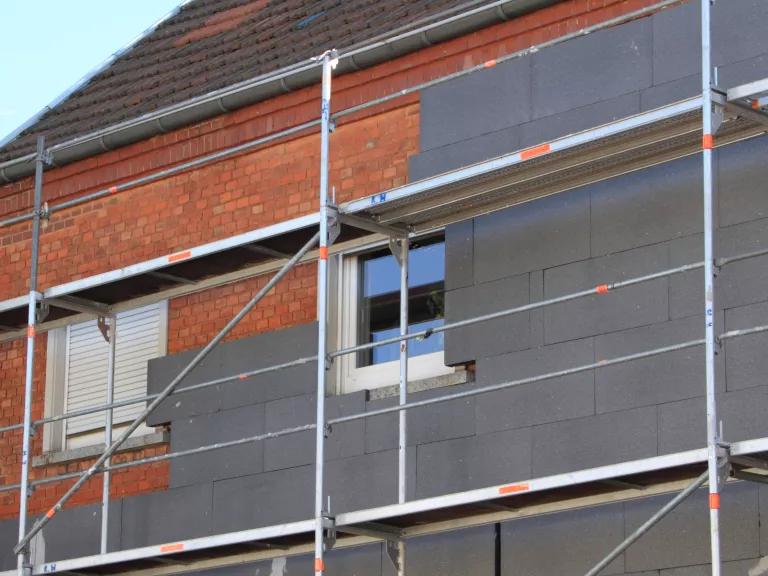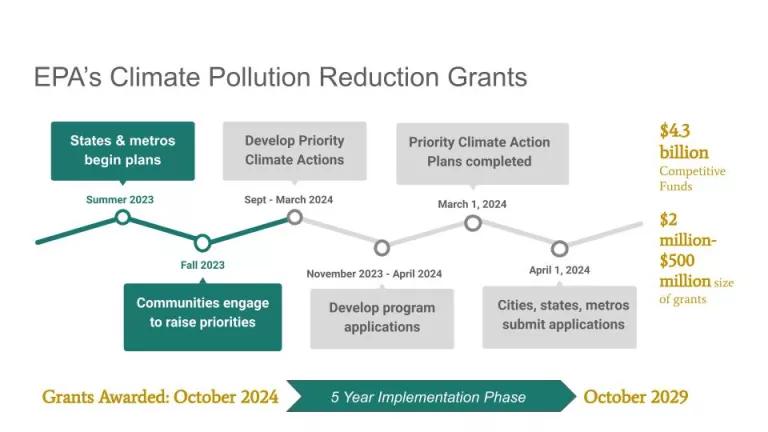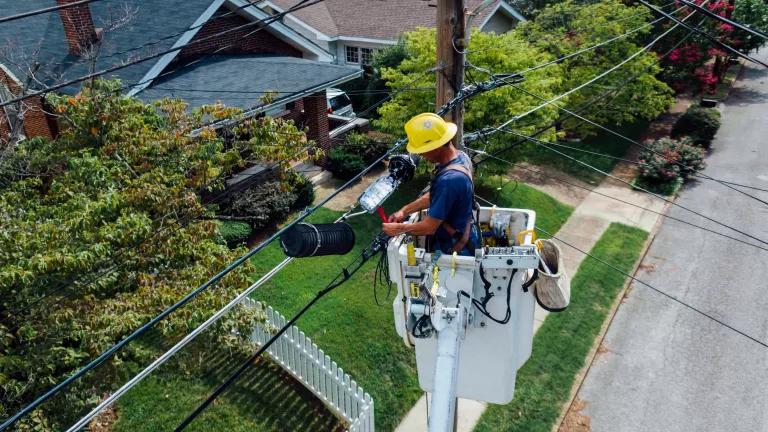We have a once-in-a-generation opportunity to invest in our homes and buildings, to win big on public health and reduce both housing energy costs and climate change pollution. Despite the huge benefits, the path to investing in existing buildings has been full of obstacles but now billions in new flexible funds are soon to be available from the U.S. Environmental Protection Agency (EPA).

Older building retrofit to add insulation
iStock
EPA’s recent announcement of $4.3 billion in competitive funding for the Climate Pollution Reduction Grants provides funding that is flexible and can address strategies from the multiple sectors of climate pollution. Here’s how it works: States and regions develop inventories of climate pollution, and craft measures to address these sources in their Priority Climate Action Plans, then any covered state or local government is eligible to apply for grant funding to implement the measures.
For many cities, buildings are the single biggest emissions source. State and local government leaders have a critical opportunity to work in partnership across agencies and with community organizations, to create bridges over the obstacles to investing in buildings. This could spur a new era of reinvestment in communities, creating local jobs and healthy homes while reducing energy poverty and climate pollution. EPA’s Climate Pollution Reduction Grants, if applied to create new local building energy retrofit programs, could fund the critical missing piece - connecting people to opportunities to invest in existing buildings.
What makes buildings’ energy use so challenging to address? Even though it is widely agreed that wasting energy in buildings is a huge problem, and the technology fixes are proven and cost effective, the pace of retrofitting buildings is slow and underserves low-income households.
We understand the problem well. Monthly energy bills are too high because older buildings are leaky, poorly insulated and ventilated, and rely on inefficient heating and cooling systems. In fact, low-income households may spend three times more of their income on energy costs compared to wealthier households and many are unable to pay energy bills and face power disconnections. We spend 90% of our time indoors, yet indoor air quality can often be worse than degraded outdoor air. The impacts of deferred maintenance of buildings are disproportionately experienced by renters, low-income and communities of color, and contribute to unacceptably high rates of childhood asthma and lead poisoning.
Building Solutions
The potential benefits of investing in efficiency of our buildings are enormous. Building retrofits could lower household energy use dramatically, reaching net zero when combining efficiency + electrification + rooftop solar. An estimate of attaining just a 40% energy use reduction via retrofits could save Americans $21 billion annually on energy bills, and reduce climate pollution by 160 million metric tons every year.
We have proven technology solutions, and many are now more affordable than ever due to new rebates, tax credits and growing market adoption in new construction from more efficient building codes. These new incentives generate critical momentum for moderate and higher-income households to adopt building retrofits. Some, like the electrification rebate, which offers up to $14,000 to electrify low-income homes, will open doors for historically underserved communities to access the most clean and efficient technology.
Still, taken together, these pieces alone will not overcome the obstacles to investment for most people, and especially for low-income households. Time and capital are needed to diagnose building needs, contract and finance upgrades, and seek rebates or tax credits. Homes with deferred maintenance, common in rentals and affordable housing, must first address lead, mold, asbestos and upgrade old wiring before accessing the benefits of efficiency, electrification and solar.
EPA’s Climate Pollution Reduction grants can be tapped to create new retrofit programs, formed in partnership with community organizations and co-designed to serve communities. These new programs can holistically knit together the patchwork of current approaches with new incentives, fill gaps to make buildings retrofits more feasible and include essential local policies to ensure building retrofits stabilize communities and do not displace households from affordable housing.

Applications are due April 1, 2024 to access $4.3 billion in competitive funds.
Author
EPA’s one-time Climate Pollution Reduction Grant funds offer state and local governments a flexible resource to fund this important work for the rest of the decade. The investment will seed new high quality local job opportunities in building trades and help families to lower their energy bills and enjoy more affordable, healthy homes. Timing is critical, EPA’s deadline for the competition is April 1st, 2024.
In the coming months, our NRDC team will be diving deeper into designing inclusive and community-centered retrofit programs.




